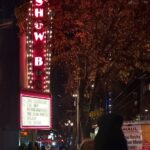by Nataliya Shpylova-Saeed

Nina Murray is a Ukrainian-American poet, writer, and translator. Among the writers whose works she has translated from Ukrainian into English are Oksana Zabuzhko, Serhiy Zhadan, and Oksana Lutsyshyna. Murray also translated Lesia Ukrainka’s Cassandra, the work for which she received the 2021 Ukrainian Literature in Translation Prize from the Ukrainian Institute London.
In one of her interviews, Murray mentioned that her first encounter with Lesia Ukrainka’s texts took place when she was a school student. She remembered how the texts resonated with her, but she never thought that she would have “the opportunity–or the courage–to translate one of them.” Lesia Ukrainka (Larysa Kosach) is an iconic figure in the history of Ukraine, who in many ways shaped not only the development of Ukrainian literature and language but also political and social efforts.
Murray’s latest work, Gannota: A Tale of Three Thimbles, published by The Braag in 2024, continues, in a way, the translation of Lesia Ukrainka’s works, Cassandra in particular. Gannota, which Murray defines as a pamphlet, takes readers on a translation journey filled with emotional and creative reverberations in response to the translation process. It tells a story about what it takes to enter the world created by Lesia Ukrainka, a woman who was ahead of her time. At the same time, Gannota resembles a scrupulous diary of a deeply personal investigation of what translation and writing are and of how inspiration can be captured and turned into indulgence. Gannota is intimate in its exploration of inspiration but also light and playful as it indulges in writing that comes from inspiration and turns into inspiration as well.
Gannota impresses with its high sensitivity and openness about one’s readiness and willingness to surrender to become a voice of the other. Traveling across Lesia Ukrainka’s world, Murray’s narrator enters quicksilver worlds but also stops unexpectedly to catch up with the overwhelming intensity that comes from a very close and private rendezvous with the woman whose poetic talent and philosophical depth captivates and hypnotizes.
At the beginning of the pamphlet, Murray notes that Gannota is her “meditation on an iconised poet’s life and [her] way to inhabit that feeling of being spoken-through.” As if crossing a threshold that separates a poet and a translator, Murray lets her narrator take over. Gannota gives a delicate insight into the intimate process of experiencing a text and channeling a voice to be delivered to the reader:
“Wind makes a bone-flute of the clapboard; rain fingernails under the paint—up and down the steeple. The well. I am a bolus on the tongue of the plains. Something about to be swallowed. My headlights blink. Out of the car. Into the house.”
The pamphlet captures the essence of writing and inspiration. The narrator surrenders and invites the other to speak. The moment of echoing resembles a vision that can be trivial and familiar and at the same time bizarre and obscure:
“fog like oatmeal
superimposes states
each piece of a puzzle
spins four ways
the days are quantum”
A dance of images, words, voices, and emotions makes the narrator turn into a mystic who guides and is guided:
“Ours is a meagre magic:
done stitch by stitch,
to be touched
only a few times a year.
On this night we can be certain
the mules and oxen will speak
in tongues that make sense
in the twisting worm-holes
of our human ears.”
To become a voice, the narrator perceives things around to connect the present and the past and make sense of what may appear at first glance as chaos and noise:
“early on winter Sundays
this is what the chimney lays:
a feather, a spasmic yawn of the wind,
a date of birth singed
on a scalloped scrap of a letter,
cold pinches of ash that run like water,
fingerfuls, thumbprints.
this is what the laundry basket holds:
the brine of horseback thrill,
the dry skin of noons,
garden worms, strange appetites,
cratered, like moonscapes, caps of white mushrooms,
the skeletal indictment of dying mint.”
This ephemeral condition of being and not-being is amplified by inspiration, but it also is nourished by the desire to create:
“this is how things come apart,
waves from the future
fail to cancel their counterparts
released from the past,
scrambling horoscopes and Tarot readings.”
The narrator is anxious to transcribe the voice. She seems to echo the words that she hears and repeat the visions that overwhelm her. But she also has to learn anew how to articulate what has been heard and find words to describe what has been seen:
“no language but naming
blood that inchoate swell
thump thump whoosh
squeeze of a larger heart
no there but here in and out
each sense a spot on an eel”
The narrator is a channel for the voice she chooses to deliver. At the same time, she balances between the past and the present, and multiple tonalities intersect creating a polyphony of undertones and overtones. While Gannota is a sort of surreal journey into the world of physicality and ephemerality, it is grounded in the present. Or rather, it is kept connected to the present by the will and power of the narrator. In an unexpected divergence from the chimerical world of images and voices, a reference to Wallace Stevens makes readers remember the atrocities of wars, the barbarity of physical extermination, and the devaluation of life. Attention is brought to the current Russia’s war against Ukraine: “Another war in the old world, a hope for statehood. Volunteers rally.”
Such a combination of literary figures–Lesia Ukrainka and Wallace Stevens–may seem arbitrary and accidental. They seem to cross paths in the narrator’s imagination. However, this encounter is meaningful and, in a way, symbolic. Lesia Ukrainka is one of the Ukrainian writers who strongly opposed Imperial Russia’s suppression of the Ukrainian language and culture. Moreover, her ideas regarding Ukraine’s political independence and cultural affiliation with Western Europe were avant-garde during her lifetime. Wallace Stevens was one of the American poets who powerfully depicted how wars cancel the value of life. The voice of the narrator is “always already” a chorus that brings together voices of the past which appears to shape the present and the future. In this light, “another war” sounds like a sad banality and at the same time reveals some reproach–humanity does not seem to be able to learn the most essential lessons of life.
Gannota is a text in itself that connects to and co-creates other texts. The narrator leaves her space only partially. She balances between her own voice and the voices of those she hears, listens to, responds to, and invites to communicate. She is overcome with multiplicities which generate a frenzy of impressions. At the same time, the ability to speak and articulate is recovered through a symbolic disintegration. To find a new voice, the old voice has to be subdued and muffled. But only for a moment:
“let it be spring. daffodils piebald the green. trees mere lacework, easy to see. mud. all details are not important. what is desperation? two women with bloodied hands. (what is a clove? that which cleaves). the cyclops’ eye cycles, eulogising. blood on the floor. blood between Larysa’s legs. rags. […] cold water, chapped hands, bury the rags. keep clean. make clean. stand up straight, the shock of it. water is barrel rain, trapped snow. pretend. pretend.”
For Murray, writing is inspiring and empowering. It is a way to manifest one’s agency, as well as exercise courage to give up one’s self to be able to hear the voice of the other. A writer seems to achieve the utmost freedom when multiple voices are allowed to come through and respond to and echo each other. The ultimate pleasure of such a chorus is rendered through the ability to let go and allow oneself to indulge in a whimsical play of weaving words and worlds. Murray embraces the spontaneity, beauty, and energy of the journey that inspires and empowers:
“one is a reaper
two is a cry
three is coven
more is a tribe
one is a spinner
two is a plan
three is a prophecy
more is a clan
one is a refugee
two is a home
three plant an orchard
among the gravestones”
Nataliya Shpylova-Saeed is a Preceptor in Ukrainian at the Department of Slavic Languages and Literatures, Harvard University.



Add your first comment to this post